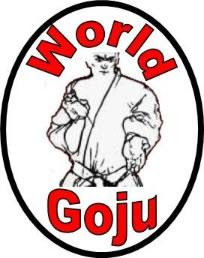
The word karate is a combination of two kanji (Chinese characters): kara, meaning empty, and te, meaning hand; thus, karate means “empty hand.” Adding the suffix “-dō” (pronounced “daw”), meaning “the way/path“, karate-dō, implies karate as a total way of life that goes well beyond the self-defense applications. In traditional karate-dō, one is supposed to compete and strive to excel against him/herself.
“The ultimate aim of karate lies not in victory or defeat, but in the perfection of the characters of its participants.” Gichin Funakoshi
This system is a style of Karate that is based on the concept of hard (go) and soft (ju), always in consistent harmony, one equalizing the other. The art combines traditional Okinawan techniques with both internal and external Chinese principles. The ju (soft), internal Chinese style concentrates upon circular movements and the development of chi (vital energy), while external, go (hard) principles rely upon physical strength. The term Goju-ryu means “hard-soft style”, which refers to the closed hand techniques (hard) and open hand and circular techniques.
